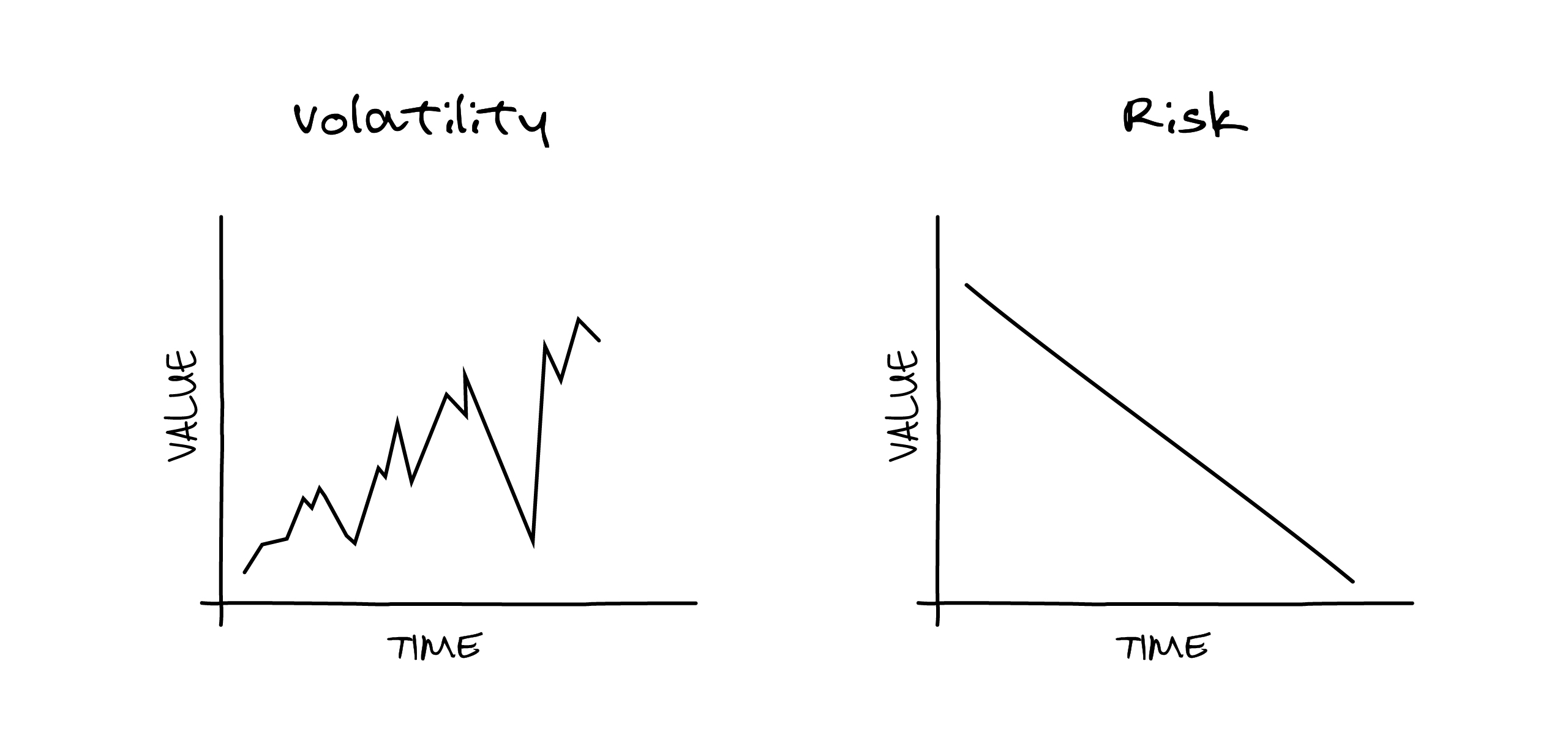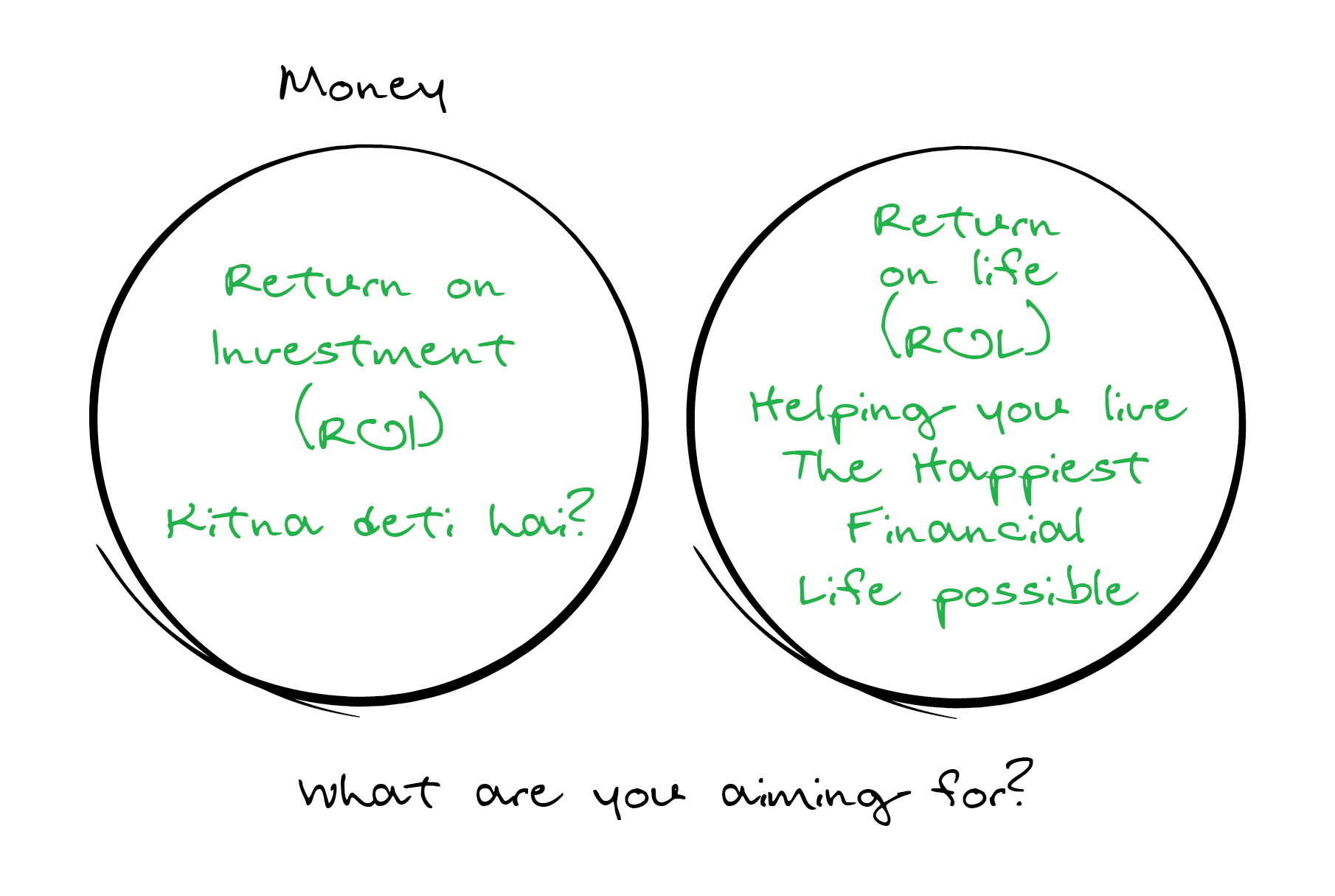Volatility and Risk
Many people often mistake volatility and risk as being the same. However, the truth is that these two concepts are distinctly different, each with its own implications for investors.
Do you agree or do you think they are the same?
Here is a powerful image that you need to understand…

Volatility is a temporary decline of capital…
Risk is a permanent loss of capital …
Volatility means prices going up and down …
Risk is prices only going down…
Your portfolio will thrive because of volatility…Your portfolio will recover even if prices go down because of volatility…
Your portfolio will never recover if prices go down because of risk…
Volatility is what you see…
Risk is what you don’t see…
The distinction between volatility and risk is crucial for investors to grasp. Volatility, represented by the fluctuations in prices over time, is a natural aspect of financial markets. It’s the ebb and flow that creates opportunities for buying low and selling high (which is necessary for successful investing). This inherent dynamism is what allows portfolios to grow and recover from temporary downturns.
On the other hand, risk is the potential for a permanent loss of capital. It’s the danger that the value of an investment may decline and never recover, eroding the wealth you’ve worked hard to build. Risk can stem from various factors, including poor investment decisions, behavior, or fundamental changes in the economy or a company’s prospects.
Let’s consider a few examples to illustrate the difference between volatility and risk:
1.Volatility Example: Imagine you own a portfolio of stock mutual funds. Over the course of a year, the prices might fluctuate significantly, perhaps dropping 15% in one month due to a market correction, but then rebounding and ultimately ending the year 20% higher than where it started. This is volatility at work. Your portfolio experienced ups and downs, but over time, it thrived because of these fluctuations.
2.Risk Example: Now, suppose you invested in a company that seemed promising, but it turns out they were involved in fraudulent activities. The stock price plummets and never recovers because the company’s fundamental value has been permanently damaged. This is a case of real risk, where you face a permanent loss of capital.
Managing these two concepts requires different strategies.
To manage volatility, you might use rupee-cost averaging ( done through SIPs), where you invest a fixed amount of money at regular intervals. This approach can help smooth out the effects of price fluctuations.
Embracing volatility means staying the course (letting compounding work for you), maintaining a diversified portfolio, and possibly even taking advantage of price dips to buy more at a lower cost.
On the other hand, to mitigate risk, you might diversify your portfolio across different sectors and asset classes, so that a loss in one investment doesn’t spell disaster for your entire portfolio. Sometimes it also means knowing when to cut your losses and exit a losing investment.
An important point to note – The guidance of a world-class financial professional can be invaluable in helping investors navigate both volatility and risk. A skilled financial professional will diagnose you thoroughly and help align the use of your capital with what’s important to you…
Additionally this person will come between you and your costly mistakes and not allow anyone (including you) to come between your goals and you… Needless to say this person will help construct a diversified portfolio that balances potential returns with an acceptable level of risk, and offer strategies for mitigating volatility and risk during downturns.
With her/his expertise, you can make informed decisions, remain resilient in the face of market fluctuations, and ultimately achieve your financial goals.
In summary, while volatility can provide opportunities for growth, risk requires careful management to avoid permanent losses. By understanding the difference between these two concepts, investors can make more informed decisions and navigate investing with greater confidence.





 and then tap on
and then tap on 

0 Comments